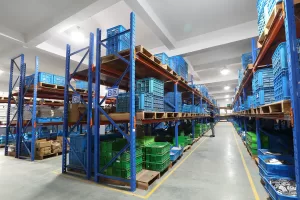In the realm of metal fabrication, the evolution of technology and techniques has continually paved the way for more efficient, precise, and cost-effective manufacturing processes. Among these advancements, progressive die stamping stands out as a significant leap forward, especially when compared to traditional single punch press operations. This article delves into the fundamental differences and advantages of progressive die stamping, highlighting why it is often the preferred choice for high-volume, complex metal part production.
The Essence of Progressive Die Stamping
Progressive die stamping is a metal forming process that incorporates multiple workstations, each performing one or more operations on a metal strip as it passes through the die. This method is distinguished by its use of a continuous feed of material that moves from station to station, with each successive action bringing a part closer to its final form until it is completed and cut off from the strip.
Contrast with Single Punch Press Operations
Single punch press operations, in contrast, involve the use of a single die and punch to perform a singular operation on a piece of metal. Each action requires the material to be manually or automatically positioned and removed after the operation, making it a less efficient choice for manufacturing parts that require multiple forming steps.
Advantages of Progressive Die Stamping
Efficiency and Speed
The most notable advantage of progressive die stamping is its efficiency. The continuous operation allows for the rapid production of parts, significantly reducing manufacturing time and increasing throughput. This is particularly beneficial for large-scale production runs where time and speed are critical factors.
Cost-Effectiveness
Despite the higher initial setup and tooling costs, progressive die stamping proves to be more cost-effective in the long run for high-volume production. The reduction in labor costs due to automated feeding and the ability to perform multiple operations simultaneously result in a lower cost per part, making it an economical choice for mass production.
Precision and Consistency
Progressive die stamping offers superior precision and consistency, with each part produced to exact specifications. The controlled process ensures minimal variation between parts, which is crucial for applications requiring high levels of accuracy and consistency.
Versatility
This method can handle a wide range of materials, thicknesses, and part complexities, making it a versatile choice for various industries. The ability to integrate multiple processes, such as punching, coining, bending, and cutting, into a single operation allows for the creation of complex parts without the need for secondary operations.
Reduced Material Waste
Progressive die stamping is designed to maximize material usage, resulting in less waste. The careful planning of the die layout and the use of strip layouts ensure that material is used efficiently, contributing to cost savings and environmental sustainability.
The Difference It Makes
The difference between progressive die stamping and single punch press operations can be likened to the difference between wholesale and retail. While both methods achieve the same end—forming metal parts—the efficiency, speed, cost-effectiveness, precision, and versatility of progressive die stamping make it akin to a wholesale approach, optimized for large-scale production with attention to detail and cost.
In summary, the superiority of progressive die stamping over single punch press operations is evident in its efficiency, precision, cost-effectiveness, and versatility. For manufacturers aiming to produce high volumes of complex parts with stringent quality standards, progressive die stamping offers a compelling solution that balances performance with profitability. As technology continues to advance, the gap between these two methods is likely to widen further, reinforcing the position of progressive die stamping as a cornerstone of modern metal fabrication.






